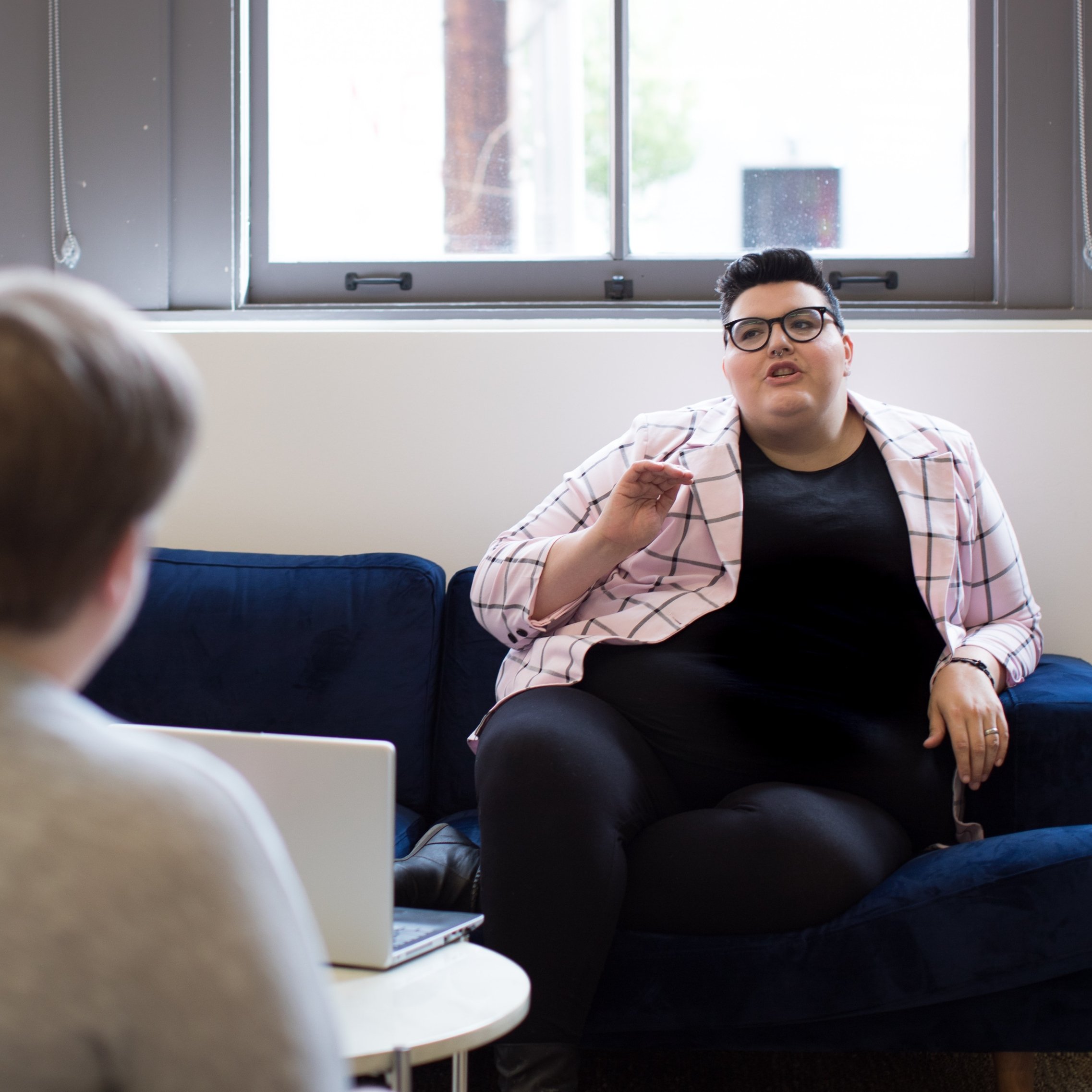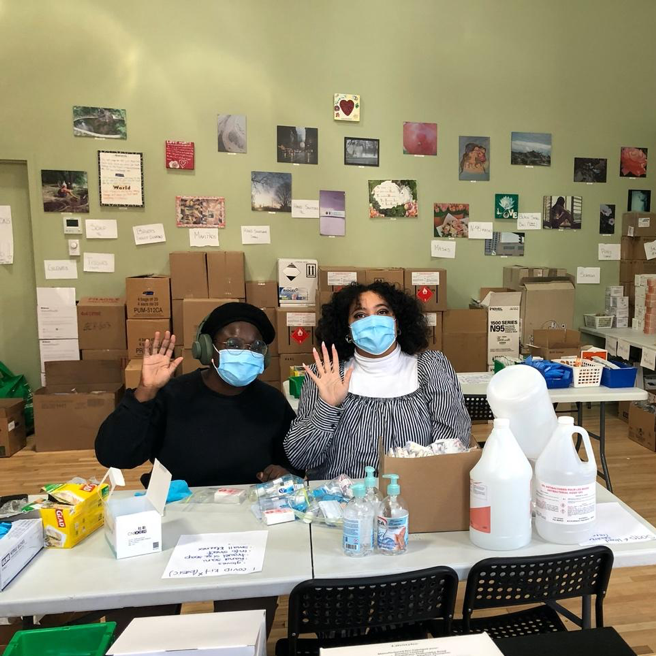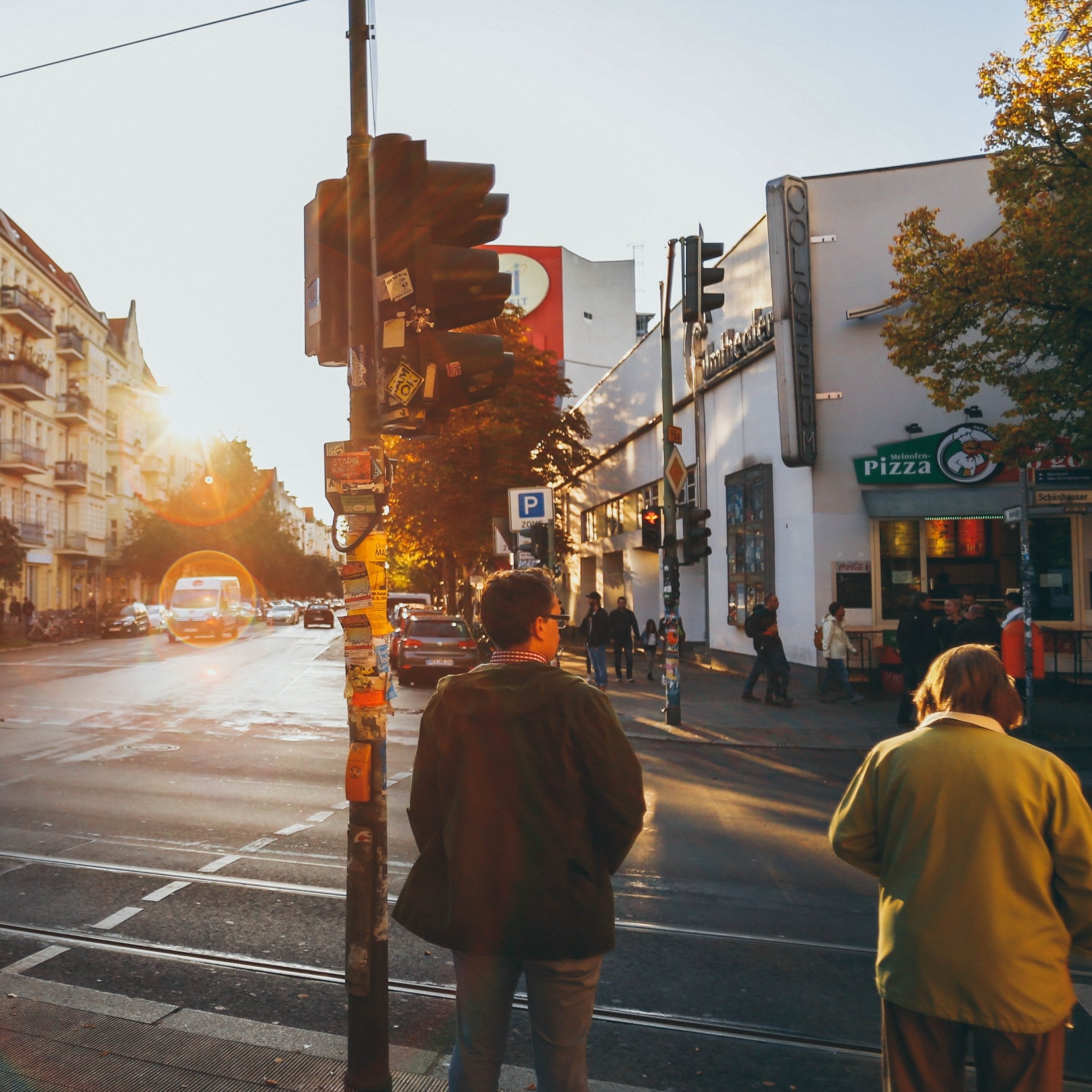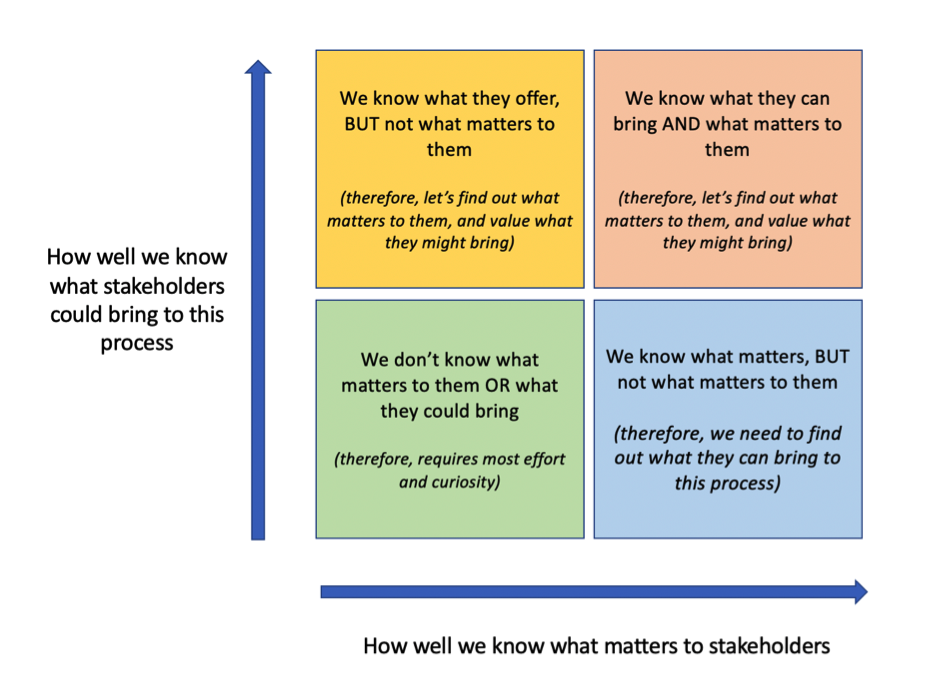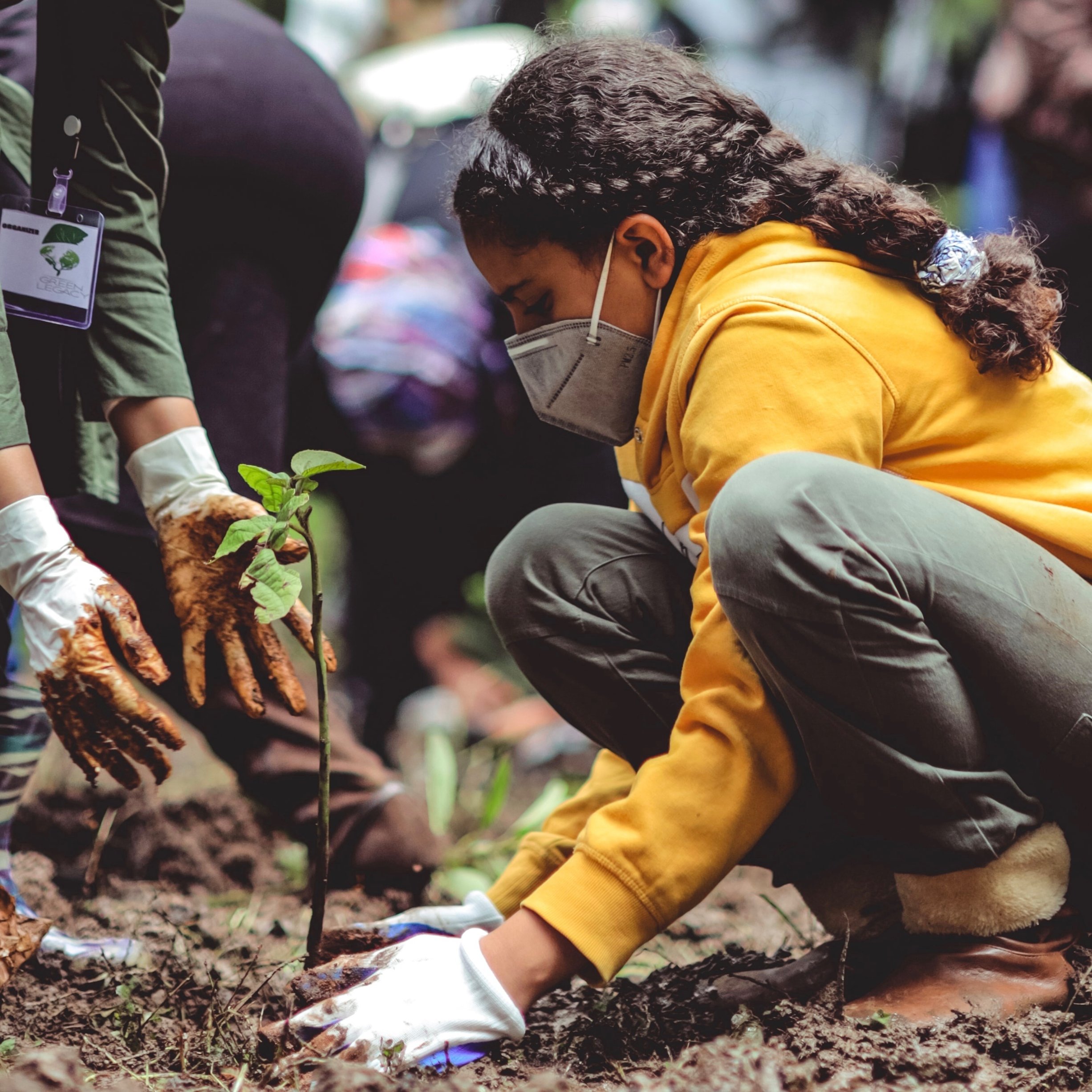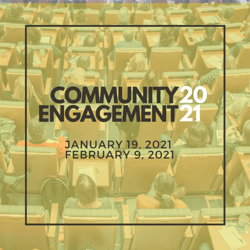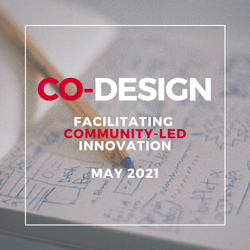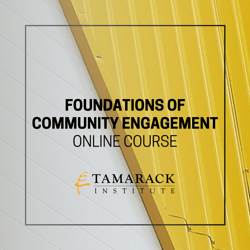Bringing you the Best in Community Change
Tamarack Institute | December Edition, 2020
Welcome to Engage!
Engage! features new stories, tools, and resources designed to equip you for community change.
In this edition, we're exploring our hope for the future - both the next year and beyond - as we continue to tackle the challenges of the current context.
Stories of Hope
The Hope in Facing Truth
BY: ADAOMA PATTERSON
 We made it!
We made it!
2020 has felt simultaneously like the longest and shortest year. So many of us anticipated and planned for a year of significant accomplishments, opportunities and growth. We felt that 2020 would be a year of renewal. And then something called the Corona virus (COVID-19) emerged. This little known virus became a powerful unseen force that turned our lives upside down, forced many to work from home, caused small businesses to struggle to stay afloat as well as children and youth to stop attending in person classes, and people from travelling to and from Canada. We started using words like pivot, social distancing and unprecedented. A mask and hand sanitizer became indispensable items. We learned quickly that essential workers are not only healthcare workers and teachers but also retail workers, transit operators and cleaning staff. Throughout this pandemic, they could not work from home. In fact, essential workers worked longer hours, sometimes away from their family and in difficult circumstances. We also finally acknowledged that while everyone was impacted by COVID-19, those on the margins, working in precarious and low-wage jobs, underhoused or experiencing racism, are affected to a greater extent.
COVID-19 also shined a bright light on the many forms of inequity that have always existed. Suddenly, across Canada, in workplaces, places of worship and among friends, people started having intentional conversations about racism and systemic discrimination and its impact on Indigenous, Black and other racialized people. A band aid was ripped off a long festering wound, resulting in pain and discomfort for so many of us.
Amidst the pain, chaos, uncertainty, fear, loss and difficult conversations, we are seeing some beacons of light. Communities have come together in new ways – to deliver food and supplies to seniors and to check in on neighbours isolated and shut-in. Social service agencies adjusted their programming, setting up workshops by phone and virtually to stay connected to the people they serve. Municipalities led the way in mobilizing residents and community partners to support residents, especially their most vulnerable. People from all walks of life took to the streets to speak out loudly for real change.
During this unpredictable year, we learned that when push comes to shove, we can respond to people’s needs, we can try new ways of doing things, we can implement large programs and remove barriers to accessing them. We learned that the challenges some residents have been experiencing can be addressed if we choose to. We learned that James Baldwin spoke truth when he said “Not everything that is faced can be changed, but nothing can be changed until it is faced.” As we head into 2021, it is my sincere hope that we hang on to the beacons of light and sustain our willingness to face truths that ultimately allow us to recreate the communities, cities, provinces and country we always imagined.
Learn More
- Learn more about Adaoma Patterson
- Learn more about the Board of Directors
- Explore our recent webinar series featuring members of the Tamarack Institute board of directors, on Poverty Reduction, Climate Change, and Leadership & Innovation
Share this article:
Waiting for Hope
BY: PAUL BORN
 As an unapologetic optimist, hope is normally not hard to find. The COVID-19 second wave has descended on us this fall like a deep west coast fog. All summer we knew it was coming. Many of us relaxed bathing in the familiar relationships and interactions we so missed. How could this be happening again?
As an unapologetic optimist, hope is normally not hard to find. The COVID-19 second wave has descended on us this fall like a deep west coast fog. All summer we knew it was coming. Many of us relaxed bathing in the familiar relationships and interactions we so missed. How could this be happening again?
My hope is so tired, stuck, struggling under this fog that feels so immanent, my heart is heavy, waiting. Hoping for something hopeful to appear.
We are entering the season of light celebrated in the belief that darkness is temporary. To remind us that even though we cannot see the light it will return. It is a season that is meant to feed hope and restore us.
We embrace this season by attending concerts and parties offered specific to the season. We relish in relationships and consider the gifts we will share on that one day set aside for us all to be together. Family, friends, festivities fill us - feed us. This year these festivities will for most be virtual if at all.
When I wrote the book Deepening Community: Finding Joy Together in Chaotic Times I had not envisioned a pandemic that might infuse every aspect of our lives. I wrote it to discover ways to deliberately strengthen community in a belief that if we act with intent our communities would be better for all.
As we are told to socially isolate we accept that community is not essential. We are told that actions which separate us, that are designed to minimize interactions, that isolate us at home are good for us. Social isolation is enforced.
We also understand that this virus is dangerous and until we find a cure or a vaccination we have no choice but to be safe. We wear masks, we stay home and we are very smart about engaging with others. Then how do we stay safe and fill our need for community? How might we embrace the light? I want to share four ideas that may restore our hope.
A story is unfolding all around us. A friend suggested we are "making history", he encouraged me to not miss this opportunity to observe. Taking the time to hear each other's unfolding story is essential to building relationship and opens the door to deeper interaction.
Being home, embracing virtual interaction has some benefits. For most of us we have "more time". I love stories of people hosting virtual dinner parties, taking up a hobby with their families. Having fun together with others is an effective way to build community.
There are so many ways we can care for each other while we physically distance. Sending cards with a lovely message, dropping flowers or a meal at people's homes. Baking seasonal delights to share. Sending a encouraging text. Phoning or zooming people who are down or ill. Making donations to a special charity. These are all ways we can express caring. Caring for each other is a terrific way to build community.
The most efficient way to build community is also the best way to restore our hope. By working together with family, neighbours and friends to build a better moment for others or to improve the lives of those in need creates a magical feeling so often associated with this season of light.
Last year, our extended family of 12 people played a game on boxing day. We all put some money in a box. Then we each shared which charity most needed that money and why. The first round of voting left us with two charities. Now we formed teams and worked together to tell a more in depth story about each charity. The final vote allowed us as an extended to choose a charity we would all support. This was not only fun but we also learnt a lot about unique charities in our community. We could easily do this online together.
The other day my cousin was joining a family zoom call to celebrate his birthday. When he called in all of his cousins and aunt and uncles and even grandma was on the call. We all gave him virtual gifts. It was a wonderful way to make someone's day.
It is challenging to express collective altruism while physically distancing - it requires someone to take initiative.
We would love to hear your stories this holiday season. Each one will build hope.
Please email me your story at paul@tamarackcommunity.ca I will collect them and write a follow up article in the New Year.
Learn More:
- Learn more about Paul Born
- Explore Deepening Community: Finding Joy Together in Chaotic Times
Share this article:
Featured Resource
The Impact of Local Intersectoral Action
BY: MARIE-PIER ST-LOUIS & ANGÈLE BILODEAU
 Complex social problems require the involvement of actors from various sectors (education, health, transportation, etc.) and spheres of society (institutions, private enterprises, community organizations, philanthropy) to develop better coordinated or integrated interventions (public policies, programs, initiatives, etc.). Intersectoral action is collaborative action carried out by a group of actors from different fields and spheres of society who work together in a logic of interdependence.
Complex social problems require the involvement of actors from various sectors (education, health, transportation, etc.) and spheres of society (institutions, private enterprises, community organizations, philanthropy) to develop better coordinated or integrated interventions (public policies, programs, initiatives, etc.). Intersectoral action is collaborative action carried out by a group of actors from different fields and spheres of society who work together in a logic of interdependence.
Various tools allow actors to outline the path of their intersectoral action. For example, a logical model, theory of action, or theory of change. Yet these tools do not provide references for thinking about one’s joint action and how different outcomes may be transitional, as they mark the progression of intersectoral action towards it goals.
Based on research about how the effects of local intersectoral action in living environments are produced, researchers and practitioners in Montreal developed an interactive online Tool for Assessing the Effects of Local Intersectoral Action. The original French version has been available since November 2019. The English version will be launched during our upcoming webinar with the Tamarack Institute. The English version was translated and adapted through a collaborative process involving original coauthors of the tool, Tamarack Institute, and other contributing partners.
About the Tool for Assessing the Effects of Local Intersectoral Action
The Tool generates information for assessing the effects (aka impacts) of local intersectoral action in living environments. It first uses a timeline to map key events in an intersectoral action project. Each of these events is then associated with a transitional outcome - taken from an inventory of transitional outcomes that chart the progression of local intersectoral action towards its effects. The exercise allows actors to identify a chain of transitional outcomes specific to each transformation observed in the living environment(s).
Afterwards, the chains of transitional outcomes are illustrated in diagrams. The diagrams highlight the dynamics of how intersectoral action processes relate to their effects.
Who is the Tool for?
The Tool for Assessing the Effects of Local Intersectoral Action is for anyone involved in intersectoral projects targeting tangible transformations in living environments who want(s) to document the effects of their joint action.
In order for the Tool to be useful, the project must already have passed through some marker of its progression or led to a few achievements.
The Tool can be useful in other ways to anyone interested in intersectoral action (for example, as a teaching tool).
What does the Tool include?
The Tool includes 3 modules.
Module 1: Taking Ownership of the Foundations of the Tool
This module allows users to learn the foundations of the Tool. It includes an animated presentation on the Tool’s foundations, as well as documentation.
Module 2: Mapping the Key Events of a Project and Translating Them into a Chain of Transitional Outcomes
The second module enables actors involved in local intersectoral action to assess the effects of their action in living environments. It guides you to:
- Identify the significant events leading to observable effects in living environments, based on your project's story;
- Link these events to an evidence-based theory that identifies 12 generic ‘transitional outcomes’.
Module 2 includes a facilitator guide and related documents.
Module 3: Diagramming a Project's Chain of Transitional Outcomes, Culling Out What Has Been Learned, and Integrate Learnings into Action
The final module helps you show, in graphic form, a project’s chain of transitional outcomes. This allows for an overview of the project’s effects. It also leads members of intersectoral committees to identify lessons, and then reinvest those lessons in action. Module 3 includes:
- a timeline template, to consolidate the chain of significant events and the transitional outcomes within your project;
- a sample diagram of a project’s chain of transitional outcomes;
- a question grid to draw out lessons and reinvest them in action.
This article was written by Marie-Pier St-Louis, Project Manager and Angèle Bilodeau, Full Research Professor, School of Public Health, University of Montreal & Scientific Director, Research Chair in Community Approaches and Health Inequalities
Learn More
- Explore the Tool for Assessing the Effects of Local Intersectoral Action in English and French
- Register for the webinar on December 10, which will profile and explore the new tool
- Learn more about CACIS
Share this article:
COMMUNITY-LED SPECTRUM TOOL
By: Lisa Attygalle
Explore the Tool
SOCIAL CAPITAL DURING COVID-19
By: Vibrant Communities
Read the Case Study
EVOLVING THE PRACTICE OF COLLECTIVE IMPACT
By: Sylvia Cheuy
Read the Paper
DEEPENING COMMUNITY IN ATLANTIC CANADA
By: Dan Ritchie
Read the Post
A NEW APPROACH TO STAKEHOLDER MAPPING
By: Max Hardy
Read the Post
SUSTAINABLE INNOVATION IN CANADIAN COMMUNITIES
By: Elle Richards
Read the Post
Community Engagement 2021
Virtual Workshop
January 19, 2021 | Register for the January Workshop
February 9, 2021 | Register for the Workshop
Discover how the Community Engagement landscape is changing and evolving.
Join Lisa Attygalle and Pamela Teitelbaum for a new virtual workshop designed to equip you with the latest in Community Engagement. You'll explore the role of creativity, how to support community-led approaches, challenge mindsets, and adapt your strategies to a changing world.
Co-Design: Facilitating Community-Led Innovation
A new 4-part virtual workshop running May 4th, 11th, 18th, and 25, 2021
Join Liz Weaver and Lisa Attygalle for 4-part virtual workshop designed to give you hands-on experience and a step-by-step approach to designing and facilitating collaborative Community Innovation sessions.
We'll go deep on different approaches to engage the community to innovate together, understand what makes these kinds of gatherings distinct, and provide you with tools that you can use to host them.
Foundations of Community Engagement
Online Course | Access course materials anytime and learn at your own pace
Join Tamarack's Lisa Attygalle, Director of Community Engagement to build a foundation of knowledge and practice for your community engagement work.
Through video lessons, case studies, readings, and activities, you'll dig into the role of community, who should be engaged, community engagement techniques, how to overcome challenges, and how to evaluate your engagement activities.
This course is available to use at your own pace, but you'll be learning alongside a diverse group of over 200 Tamarack Institute learners. Engage in comments and questions on the online platform, and join Lisa for monthly small group coaching to get more personalized feedback and insight.
Assessing the Effects of Local Intersectoral Action: A New Online Tool
Date: December 10, 2020
Speakers: Angèle Bilodeau, Gillian Kranias, Marie-Pier St-Louis, and Pamela Teitelbaum
Transforming Communities Through Resident Leadership: Lessons from Healthier Together
Date: December 16, 2020
Speakers: Pat McNamara, Abby Goodwin and Sylvia Cheuy
Making the Case for Arts-Based Community Engagement
Date: February 10, 2021
Speakers: Hiba Abdullah, Christopher Pandolfi, and Lisa Attygalle
